Key takeaways:
- Online bookstores enhance literature access through community engagement, recommendations, and digital formats like e-books and audiobooks.
- Storytelling fosters human connection and empathy, shaping our understanding of diverse perspectives and cultures.
- Effective story structure involves mapping out key plot points, utilizing a three-act structure, and ensuring a resonant conclusion that invites reader reflection.
- Sharing the creative journey with readers through personal anecdotes and interactions deepens engagement and fosters a sense of community.
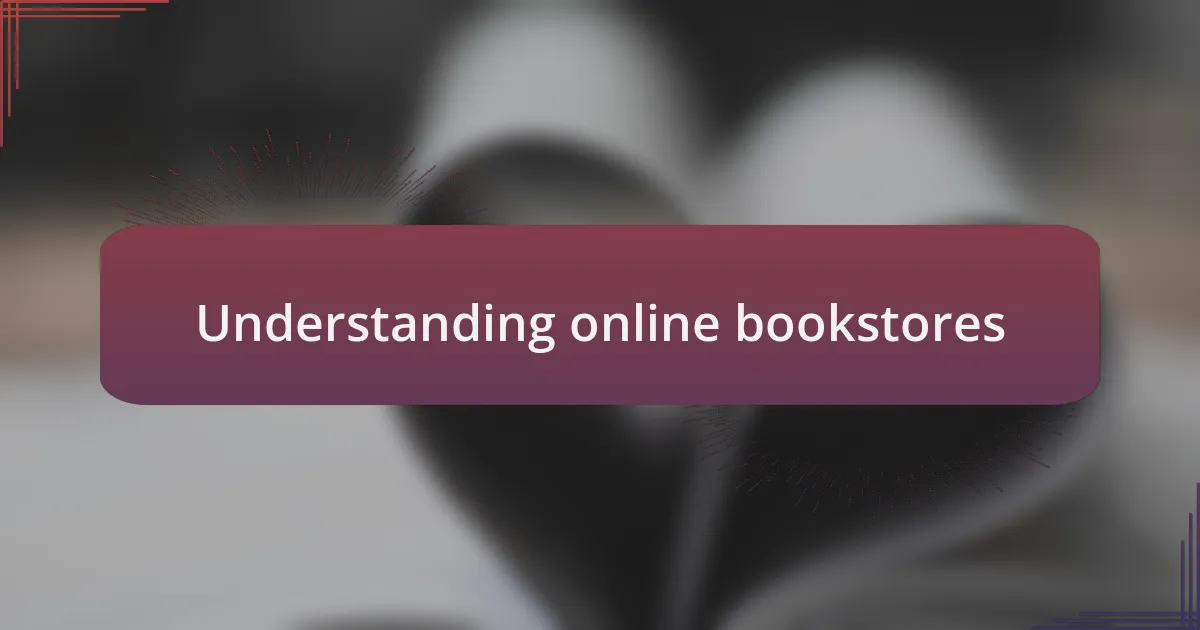
Understanding online bookstores
Online bookstores have revolutionized the way we access literature, allowing readers to explore a vast array of titles from the comfort of their home. I remember the first time I stumbled upon an online bookstore late at night; the thrill of scrolling through endless genres was exhilarating. Have you ever felt that rush of excitement when you discover a long-lost favorite or find a hidden gem that seems to call out to you?
Navigating these digital spaces feels almost like wandering through a grand library where the aisles never end. The convenience of searching for specific authors or themes is a stark contrast to the sometimes overwhelming experience of physical bookstores. I often find myself wondering, how can we maintain that personal touch in this digital realm? The answer lies in the recommendations, reviews, and community engagement that many online bookstores foster.
With features such as e-books and audiobooks, online bookstores have transformed the way we consume stories. I recall downloading my first e-book during a long commute; it changed how I viewed reading entirely. Isn’t it fascinating how technology can bridge the gap between us and our favorite narratives, making them more accessible than ever? Through these platforms, what was once a solitary activity can become a shared experience, inviting readers to connect over beloved texts.
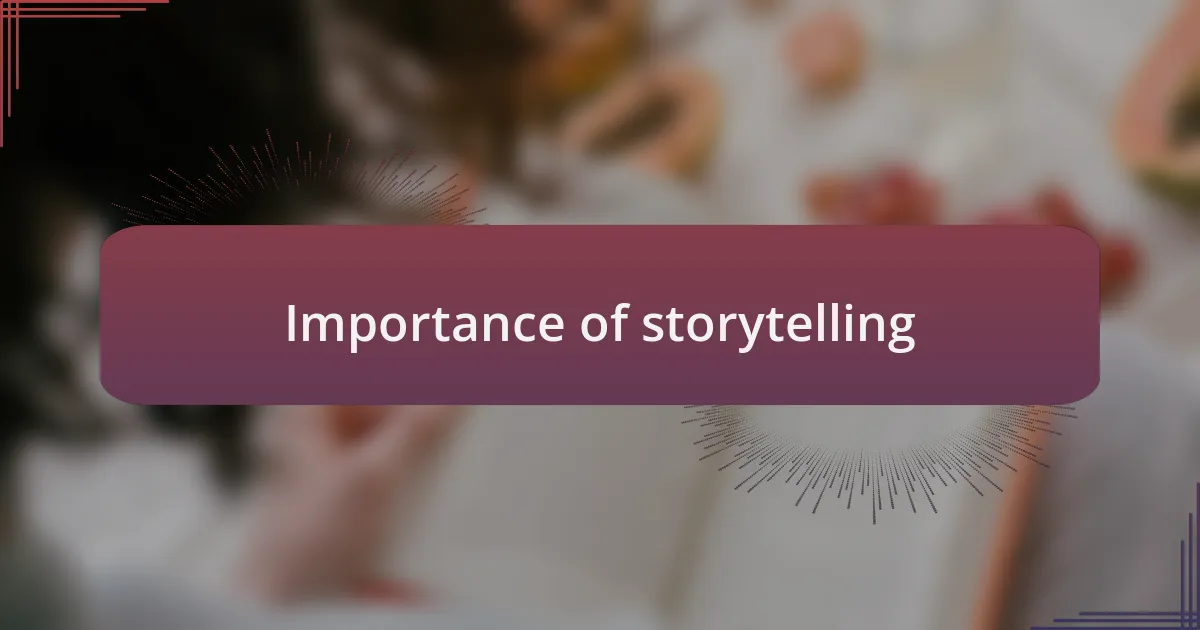
Importance of storytelling
Storytelling plays a crucial role in human connection. When I reflect on my own experiences with stories, I remember how a well-told tale can evoke deep emotions, whether it’s joy, sorrow, or nostalgia. Have you ever found yourself completely immersed in a narrative, feeling as though you’ve lived the character’s journey? That’s the power of storytelling—it draws us in and creates shared experiences that transcend the boundaries of culture and time.
Consider how stories shape our understanding of the world. When I was younger, my favorite books opened my eyes to different perspectives and cultures I had never encountered before. It made me realize that stories are not just for entertainment; they are vital tools for empathy and understanding. Don’t you think that every time we read or share a narrative, we’re not just enjoying a tale but also expanding our own worldview?
The emotional resonance of a story can linger long after the last page is turned. I still carry the impact of certain characters in my heart, as if they were real friends. What if these stories didn’t exist? Would we still possess the same depth of connection to one another? This is why storytelling matters—it fosters connection, empathy, and lasting memories, turning simple experiences into profound ones.
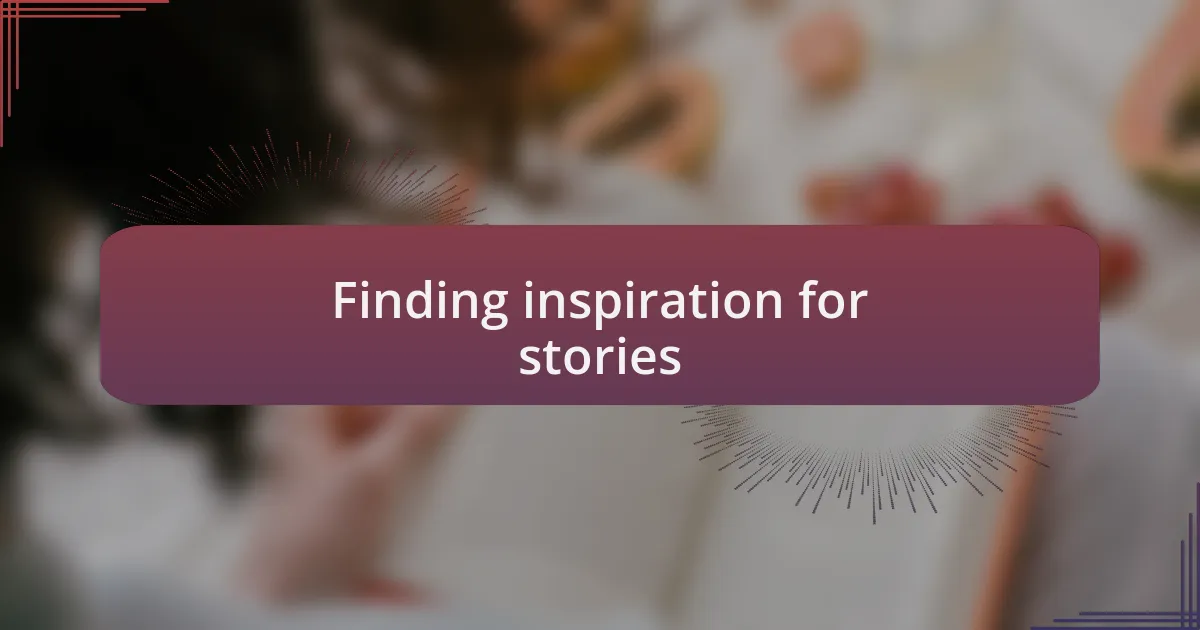
Finding inspiration for stories
Finding inspiration for stories can sometimes feel like searching for a needle in a haystack. I remember a time when I sat at a café, surrounded by the hum of conversations, and simply observed the people around me. It struck me how a single glance or an unfinished sentence could spark an entire narrative. Do you ever notice the small moments in life that ignite your imagination?
Nature has always been a rich source of inspiration for me. During a hike in the mountains, I stumbled upon a weathered tree with deep grooves and a story etched into its bark. It made me wonder about the experiences that tree had witnessed over the years. Have you ever thought about how elements of the natural world can weave their way into our narratives, enriching them with depth and authenticity?
Additionally, I find that personal experiences often serve as a wellspring of creativity. Reflecting on a challenging moment in my own life not only brings up emotions but also provides a genuine foundation for my writing. Have you allowed your own experiences to transform into stories? I believe that embracing vulnerability and honesty can lead to the most compelling tales.
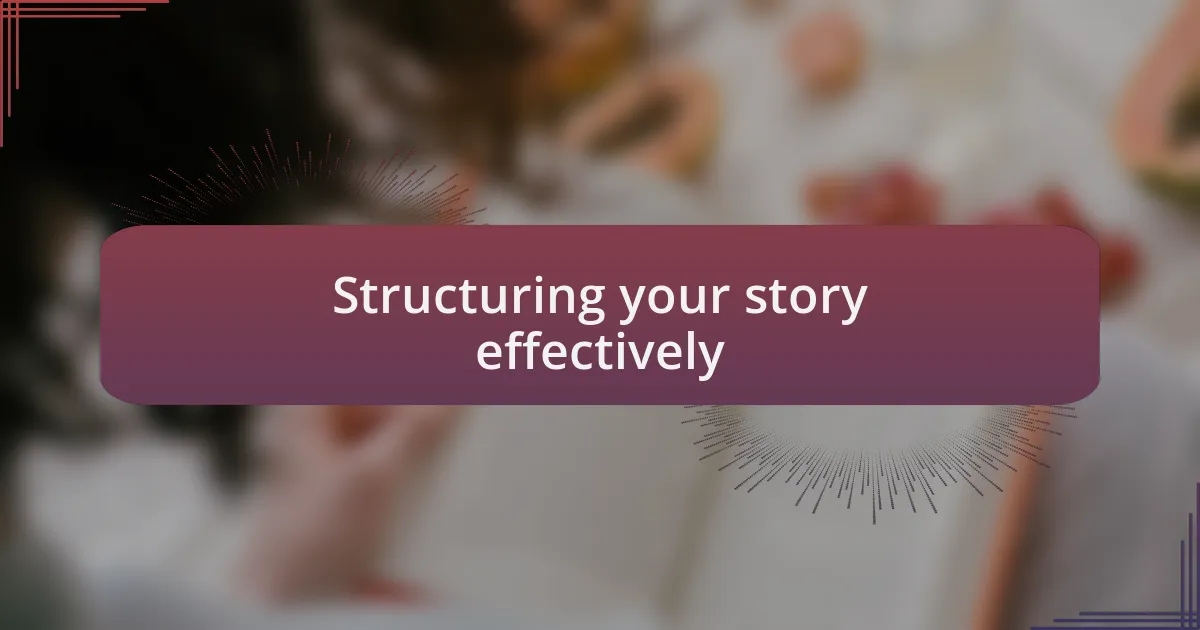
Structuring your story effectively
Structuring your story effectively is crucial for keeping readers engaged. I often start mapping out the main plot points, creating a skeleton that guides the flow of my narrative. Do you ever find yourself jotting down ideas that seem random at first? Those seemingly disconnected thoughts can actually form the backbone of your story when arranged thoughtfully.
I have learned that using a three-act structure can be particularly helpful. In the first act, I introduce the characters and set the stage, which allows readers to get to know their motivations. Then comes the conflict in the second act—this is where the real drama unfolds. I remember a story I wrote where a character faced a heartbreaking choice, and it was the tension built during this act that truly resonated with readers. Have you ever felt your heart race during a story’s climax? That emotional investment often hinges on how well the conflict is laid out.
Finally, I always ensure to wrap up the narrative neatly in the third act, providing resolution while still leaving some questions unanswered. My first attempt at this—tying up every loose end—felt unsatisfying, almost like an ending that was too neat. I discovered that a touch of ambiguity can give a story depth. What do you think makes for a compelling conclusion? I’ve found that inviting the reader to ponder the implications can create a lasting impact.
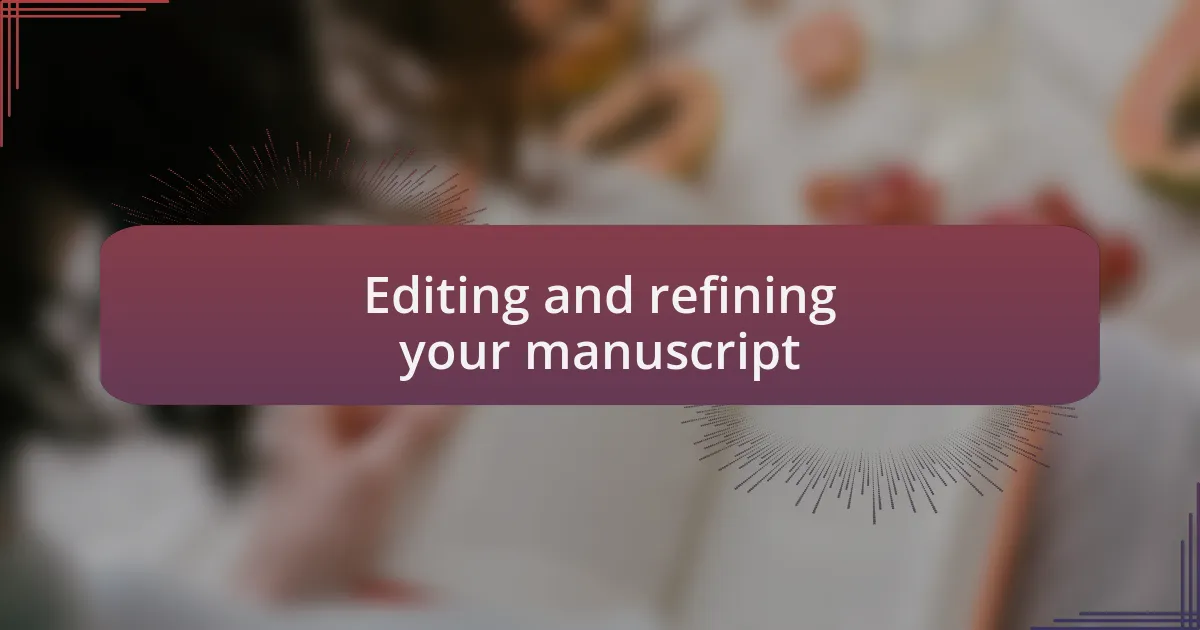
Editing and refining your manuscript
Editing and refining your manuscript is where the magic really happens. It’s a chance to delve deep into your characters and their arcs, ensuring they resonate with readers. I recall a time when I revisited a chapter, and through careful editing, I discovered hidden layers in my protagonist’s journey that I hadn’t recognized initially. Have you ever unearthed a surprising insight while revising your work? It’s like finding a treasure chest hidden beneath the surface.
I often approach editing in stages, focusing first on big-picture elements like plot consistency and character development. Afterward, I turn my attention to sentence structure and word choice. One technique that has worked for me is reading my manuscript aloud. This simple act unveils awkward phrasing and helps me gauge the emotional flow of the story. When was the last time you heard your words come to life? That auditory experience can be illuminating.
Lastly, feedback plays a crucial role in my editing journey. Sharing my drafts with trusted friends or fellow writers has provided invaluable perspectives. Once, a critique made me rethink a pivotal scene entirely, leading to an outcome that not only surprised me but brought a fresh depth to my narrative. Have you considered the power of collaborative critique? Sometimes, a fresh pair of eyes can transform your manuscript into something extraordinary.

Promoting your story online
Promoting your story online is a crucial step that can significantly impact your book’s visibility. I remember the first time I shared an excerpt on social media. The feedback was overwhelming and positive, igniting a sense of excitement and motivation in me. Have you ever felt that rush when people resonate with your work? It’s exhilarating to see your dream take flight through others’ enthusiasm.
Utilizing platforms like blogs, social media, and even book promotion websites can greatly expand your reach. I’ve found that engaging with readers through interactive posts or Q&A sessions about my story helps build a community around my work. What better way to foster connection than by letting your audience peek behind the curtain? Sharing not just the finished product, but the creative process creates a sense of investment among readers.
Lastly, don’t underestimate the power of book trailers or visuals. I once created a short video that illustrated key scenes from my story, and the response was incredible. It was fascinating to see how visual storytelling could energize interest in my written words. Have you thought about how your story can be showcased in a vibrant, visual manner? It’s a different approach, but it brings a new dimension to the narrative you wish to share.
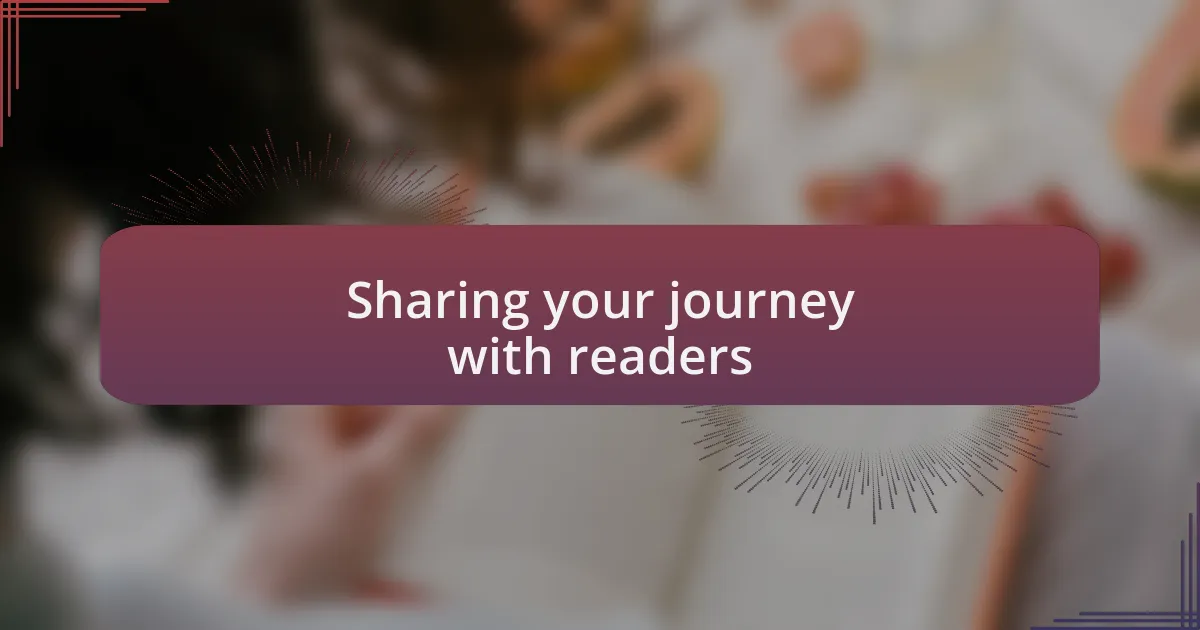
Sharing your journey with readers
Sharing your journey with readers creates a powerful connection that can enhance their engagement with your story. I recall a time when I penned a heartfelt blog post detailing the inspiration behind my main character. The response was profound; it felt as if I had opened a door into my creative heart, inviting my audience to share in my struggles and triumphs. Have you ever revealed your creative challenges to your audience? The intimacy that follows can be truly transformative.
Furthermore, I often turn to live storytelling sessions, where I share not only snippets of my work but also anecdotes about the writing process. One evening, while discussing a particularly challenging plot twist, I noticed how readers leaned in, captivated. They weren’t just hearing my words; they were experiencing the emotional rollercoaster with me. Isn’t it fascinating how shared experiences can deepen the bond between a writer and their audience?
When I reflect on my writing journey, I realize that vulnerability breeds authenticity. I once shared my fears about failure in a candid social media post. The response was overwhelming; readers shared their own fears, creating a space of mutual understanding. It’s moments like these that highlight the importance of inviting readers to be part of your journey—your story isn’t just yours; it becomes a collective experience.